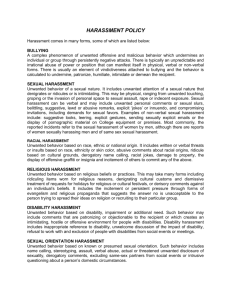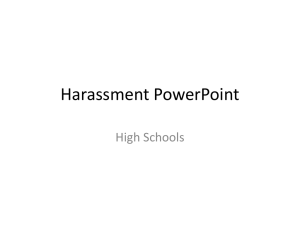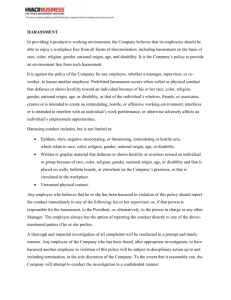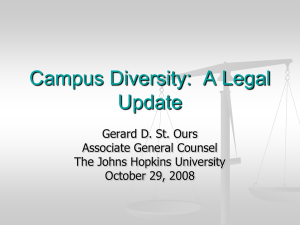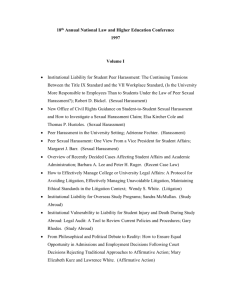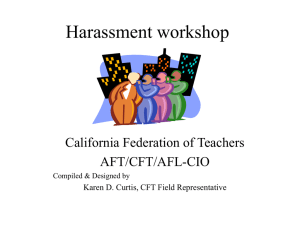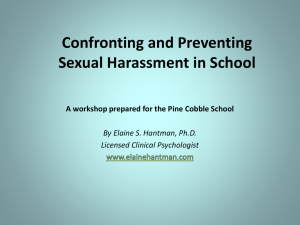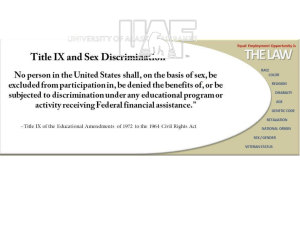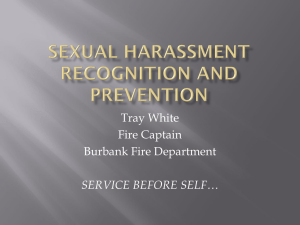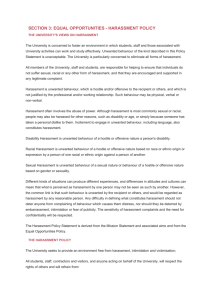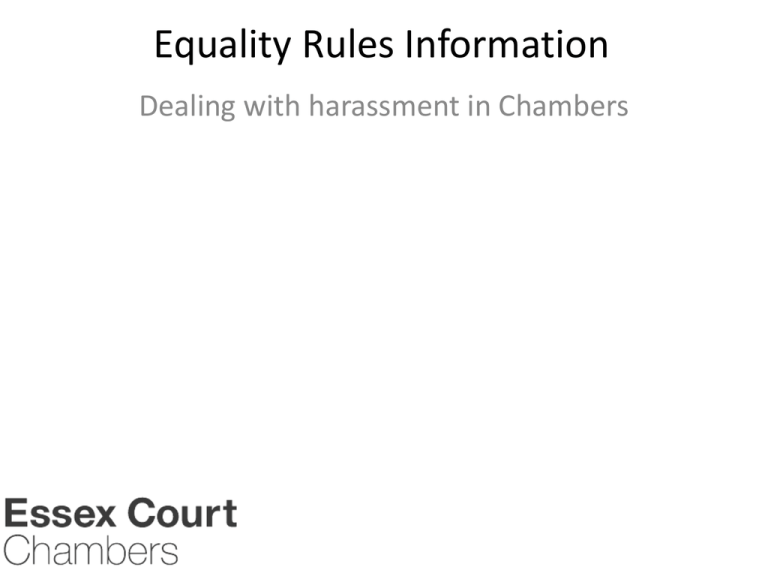
Equality Rules Information
Dealing with harassment in Chambers
Equality Act 2010
•
•
What is harassment?
“26Harassment(1)A person (A) harasses another (B) if—(a)A engages in unwanted
conduct related to a relevant protected characteristic, and(b)the conduct has the
purpose or effect of—(i)violating B's dignity, or(ii)creating an intimidating, hostile,
degrading, humiliating or offensive environment for B.(2)A also harasses B if—(a)A
engages in unwanted conduct of a sexual nature, and(b)the conduct has the
purpose or effect referred to in subsection (1)(b).(3)A also harasses B if—(a)A or
another person engages in unwanted conduct of a sexual nature or that is related
to gender reassignment or sex,(b)the conduct has the purpose or effect referred to
in subsection (1)(b), and(c)because of B's rejection of or submission to the
conduct, A treats B less favourably than A would treat B if B had not rejected or
submitted to the conduct.(4)In deciding whether conduct has the effect referred
to in subsection (1)(b), each of the following must be taken into account—(a)the
perception of B;(b)the other circumstances of the case;(c)whether it is reasonable
for the conduct to have that effect.(5)The relevant protected characteristics are—
age;disability;gender reassignment;race;religion or belief;sex;sexual orientation.”
Equality Act 2010
•
•
•
•
•
Ingredients
(1) unwanted conduct
(2) purpose or effect
(3) violation of dignity, or
(4) ‘hostile’ environment
Equality Act 2010
•
•
•
•
•
•
•
•
Applicable protected charateristics
Age
Disability
Gender reassignment
Race
Religion or Belief
Sex
Sexual orientation
BSB Rules
• Rule 305.1
• “A barrister must not, in his professional
practice, discriminate unlawfully against,
victimise or harass any other person on the
grounds of race, colour, ethnic or national
origin, nationality, citizenship, sex, gender reassignment, sexual orientation, marital or civil
partnership status, disability, age, religion or
belief or pregnancy and maternity.”
BSB Rules
• Rule 408 “A self-employed barrister must take
reasonable steps”
• Rule 408.2 “to ensure that their chambers
complies with the following requirements”
Rule 408.2(g)
• (g) - harassment
• “Their chambers must have a written antiharassment policy which must:
• (i) state that harassment will not be tolerated or
condoned and that employees, members of
chambers, pupils and others temporarily in
chambers such as mini-pupils have a right to
complain if it occurs;
• (ii) set out how the policy will be communicated;
• (iii) set out the procedure for dealing with
complaints of harassment.”
Bar Council
• Prohibition of harassment
• Relevant considerations are:
– The perception of the ‘victim’
– The other circumstances of the case
– Whether it is reasonable for the conduct to have that
effect.
• A single incident may constitute harassment if it
is sufficiently serious.
• Vicarious liability (third party harassment
abolished from 1 October 2013).
Case Study
• A pupil complains that they saw a member of
chambers with his hand touching the skirt
covering another pupil’s bottom. That other
pupil has not complained to you but the pupil
who witnessed it considers it was
inappropriate behaviour and does want to
complain. How should this be dealt with?
Further support
• BSB’s model anti-harassment policy
• Equality and Diversity Helpline (0207 611
1310)
• Bar Council’s mediation service


